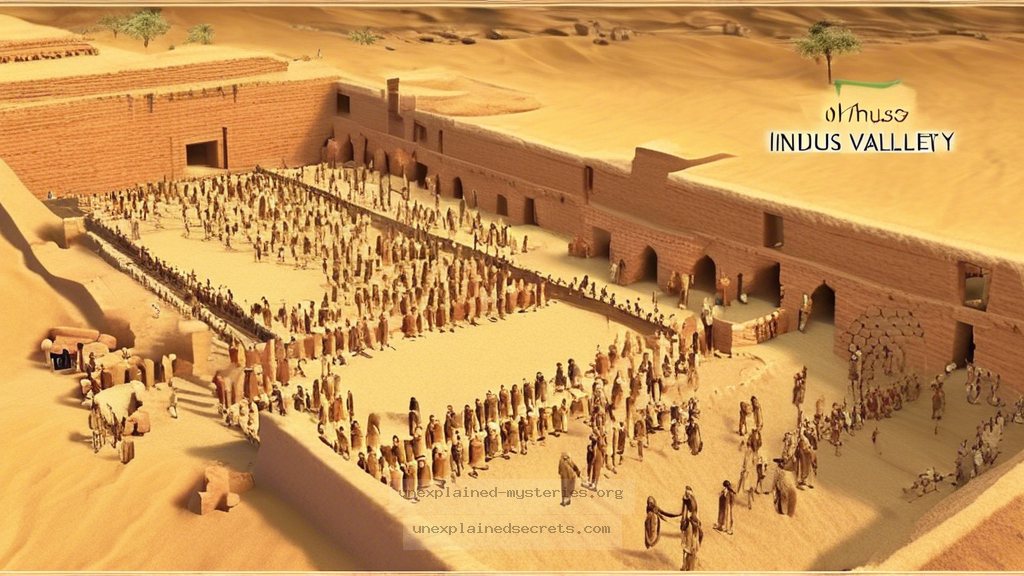What Happened to the Advanced Civilization of the Indus Valley?
What Happened to the Advanced Civilization of the Indus Valley?
The Indus Valley Civilization, one of the world’s oldest urban cultures, flourished around 2500 BCE in what is now modern-day Pakistan and northwest India. Despite its remarkable achievements in urban planning, architecture, and trade, this civilization mysteriously declined around 1900 BCE, leaving behind a plethora of unanswered questions. What caused the fall of such an advanced society? This question not only intrigues historians and archaeologists but also captivates anyone interested in the enigmatic nature of lost civilizations. Understanding the factors behind the Indus Valley Civilization’s decline may illuminate broader themes about human resilience, societal evolution, and environmental change.
Historical Context of the Indus Valley Civilization
The Indus Valley Civilization (IVC), also known as the Harappan Civilization, was contemporary with ancient Egypt and Mesopotamia. It spanned over 1,400 kilometers, covering a significant area in South Asia. Major cities like Harappa and Mohenjo-Daro were characterized by grid-patterned streets, advanced drainage systems, and public baths, signifying a sophisticated approach to urban planning and governance.
Evidence suggests that the civilization engaged in extensive trade with Mesopotamia, indicating not just a thriving economy but also cultural exchanges that shaped its development. However, the civilization began to decline around 1900 BCE, leading to questions about the causes behind its abrupt end. Was it environmental, social, or a combination of factors that led to its downfall?
Core Concepts and Theories Behind the Decline
Numerous theories attempt to explain the decline of the Indus Valley Civilization. While no single explanation suffices, several hypotheses provide insights into this ancient mystery:
- Climate Change: Evidence suggests significant shifts in climate during the late Harappan period. A major drought may have severely impacted agricultural practices, leading to food shortages.
- River Dynamics: The Indus River and its tributaries were crucial for agriculture. Changes in river courses due to tectonic movements may have led to flooding or desertification, undermining the agricultural base.
- Trade Disruption: The decline of trade routes, possibly due to political instability or conflicts, could have hampered economic stability and contributed to the civilization’s fall.
- Social Unrest: Internal strife, class struggles, or conflict among communities may have led to the breakdown of societal cohesion.
Practical Implications of Environmental Changes
The environmental changes impacting the Indus Valley had far-reaching implications. The civilization thrived on agriculture, particularly wheat and barley, which were staples in their diet. A significant drought would have not only affected food production but also the socio-economic structure.
| Environmental Factor | Impact on Civilization |
|---|---|
| Drought | Reduced crop yields, leading to famine and potential migration. |
| Flooding | Destruction of infrastructure and homes, forcing communities to relocate. |
| River Course Changes | Loss of fertile land and agricultural viability. |
Alternative Perspectives on the Decline
While environmental factors play a crucial role, alternative perspectives shed light on other possibilities. Some researchers argue that the decline might not have been as abrupt as previously thought. Instead, it could be a gradual transformation where people adapted to changing conditions rather than a complete societal collapse.
For instance, archaeological evidence suggests that while major cities were abandoned, smaller communities continued to exist in the region, indicating a possible shift rather than a total disappearance. This perspective encourages a nuanced understanding of the decline, suggesting resilience amid adversity.
Common Misconceptions about the Indus Valley Civilization
Several misconceptions surround the Indus Valley Civilization that can lead to misunderstanding its decline:
- Complete Disappearance: Many believe that the civilization vanished entirely; however, archaeological findings indicate that some aspects of the culture persisted in smaller settlements.
- Uniformity: It is often wrongly assumed that the IVC was a homogenous society. In reality, there were likely diverse groups with varying practices and beliefs.
- Technological Stagnation: Some argue that the civilization fell behind technologically. In fact, the IVC exhibited significant innovations in urban planning, metallurgy, and textiles.
Best Practices for Investigating Lost Civilizations
Investigating lost civilizations like the Indus Valley requires a multidisciplinary approach. Here are some best practices for researchers and enthusiasts alike:
- Field Excavation: Engage in systematic excavations to uncover artifacts and structures that provide insights into daily life, trade, and social organization.
- Interdisciplinary Collaboration: Work with climatologists, archaeologists, and historians to develop a comprehensive understanding of environmental impacts.
- Utilization of Technology: Employ technologies like satellite imagery and ground-penetrating radar to identify potential sites and analyze urban layouts.
- Public Engagement: Foster interest in archaeological findings through community outreach and educational programs to ensure continued support for research.
Future Developments and Ongoing Research
Research regarding the Indus Valley Civilization continues to evolve. Recent studies have focused on:
- Genetic Studies: Analyzing ancient DNA to understand population movements and interconnections with neighboring civilizations.
- Advanced Climate Models: Utilizing modern climate modeling to predict historical climate conditions and their potential impacts on ancient societies.
- Collaboration with Local Communities: Engaging with local populations to enhance historical narratives and gather oral histories that may shed light on the civilization.
Conclusion: The Enigma of the Indus Valley Civilization
The mystery of the Indus Valley Civilization’s decline illuminates the complex interplay between environmental conditions, societal structures, and human resilience. While theories abound, it is clear that this ancient civilization’s legacy continues to inspire curiosity and research. As we delve deeper into its history, we not only uncover the past but also gain insights into modern issues of sustainability and survival in the face of change.
Other Articles
What Secrets Lie Beneath the Sphinx of Giza?
Recent Posts
- What Happened to Flight MH370? The Conspiracy Theories That Still Haunt Us
- What Secrets Lurk Within the Walls of the Infamous Trans-Allegheny Lunatic Asylum?
- What Evidence Supports the Existence of Bigfoot in the Pacific Northwest?
- What Happened to the Indus Valley Civilization? Unraveling the Mysteries of Ancient Urban Life
- Can Telepathy Be Scientifically Proven Through Laboratory Evidence?







